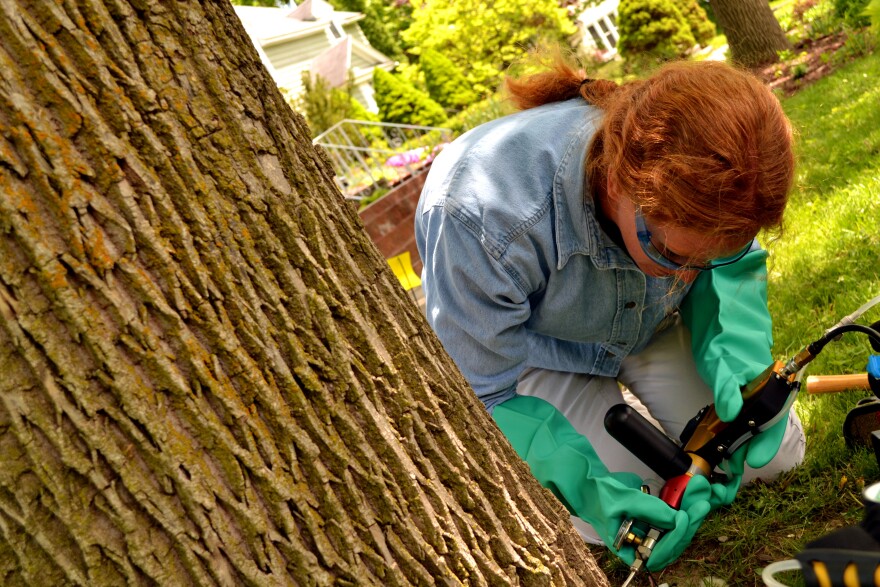The Syracuse parks department is taking action this summer to try to stem the loss of ash trees to an invasive beetle. Arborists will soon be injecting trees with a chemical to kill the Emerald Ash Borer before it can inflict its damage.
The goal is to the kill the ash borer larvae before they hatch inside ash trees and kill them from the inside out.
Lori Brockelbank is one of the arborists that will spend a month this summer injecting a thousand ash trees along city street with the insecticide. With big rubber gloves on, she drills a small hole in the tree and pumps a few milliliters of the chemical in.
"The plugs go on the bottom, so they stay at the base," she explained. "So what's nice is the chemical stays in the tree. It's not around anybody; it's very safe."
The Emerald Ash Borer began its deluge of ash trees in Michigan at the beginning of the century. The tiny beetles have slowly made their way east since.
Ash make up five percent of all trees along Syracuse city streets. They’ve been in danger since the invasive beetle was discovered in the county in August.
Some are already infected and city arborist Steve Harris says hundreds have been removed and a few hundred more will be felled this year.
That leaves half of the city's trees to be given the treatment.
"We looked at and have identified all of our healthy trees," Harris said. "We’ll treat all our healthy trees. And as time goes on that population will continue to get smaller as a tree is damaged by lightning, storm, or car."
The exit wounds of an ash borer is a tiny 'D'-shaped hole in the tree, which are difficult to spot.
Sickened Ash trees produce less than half the leaves they should, Harris said. Another easy identifier is holes made by woodpeckers.
"The presence of Emerald Ash Borer has been good for woodpeckers," he said.
Harris says the chemical treatments will last two-three years at about $80 a treatment. That’s a fraction of the $800 cost to remove and replace a tree. New ash trees will not be replanted.
"We’re not trying to stop the infestation, that’s not possible," he said, "but we’re trying to preserve our healthy ash trees in the landscape as long as is appropriate based on its health."
City arborist Steve Harris explains how they identify ash trees infected by Emerald Ash Borer:
http://youtu.be/ryEt7Leyaks





